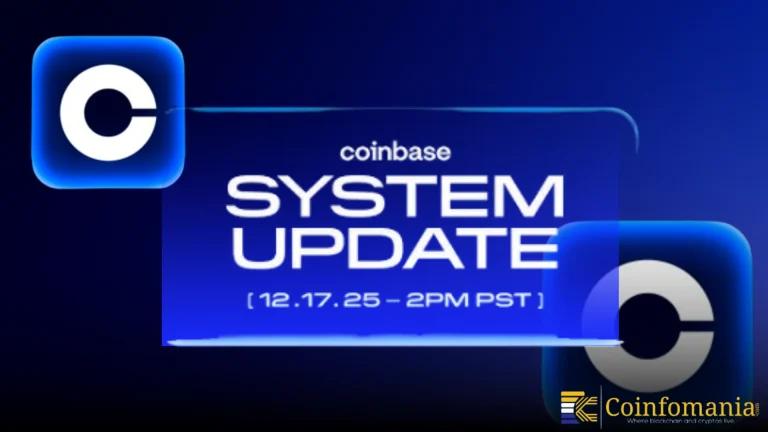Pi Network Gains Regulated Access With New Swedish ETP Launch
Pi Network gains legitimacy with a regulated ETP launch by Valour, and partners with OpenMind to use its 350,000 nodes.

Quick Take
Summary is AI generated, newsroom reviewed.
Valour launched the Pi Network ETP on Sweden’s Spotlight Stock Market, offering regulated European investor access.
This ETP debut is Pi Network’s first entry into a regulated financial market, boosting institutional confidence.
Pi Network is collaborating with OpenMind to use 350,000 Pi Nodes for AI robotics models, acting as a global distributed supercomputer.
The partnership and ETP launch signal Pi Network's rapid evolution toward utility and mainnet readiness.
Pi Network has achieved a major milestone in its journey toward global legitimacy. Valour, a leading European digital asset issuer. It has launched a Pi Network Exchange-Traded Product (ETP) on Sweden’s Spotlight Stock Market. This offers European investors the first regulated access to the Pi token through traditional finance.
A Big Step Toward Mainstream Adoption
This marks the first time Pi Network has entered a regulated financial market. The launch gives investors a compliant, transparent and accessible way. To gain exposure to the Pi ecosystem without direct crypto transactions. The move also reinforces Pi Network’s expanding global presence. As it transitions from a mobile mining project to a real-world financial ecosystem.
Valour’s decision to list the Pi ETP signals growing institutional confidence in Pi Network’s potential. The Swedish based firm is known for introducing compliant, investor-friendly crypto ETPs in Europe. This bridges the gap between digital assets and traditional finance. For Pi holders and “Pioneers,” this development represents a key validation point. This is turning what was once a community driven mobile mining project into a recognized financial instrument.
A Global AI Supercomputer in the Making
Pi Network’s growth hasn’t been limited to finance. Recently, PiNetwork DEX shared another groundbreaking update. More than 350,000 Pi Nodes successfully ran AI robotics models in partnership with OpenMind, a Silicon Valley startup.
The test showed that Pi’s decentralized network could power real-world AI workloads. This positions it as more than a cryptocurrency. It’s evolving into a global distributed supercomputer. The nodes executed complex AI tasks across robotics systems. It includes showcasing scalability, reliability and real compute potential at a massive decentralized level.
According to Pi Network Ventures, the company recently made a multimillion-dollar investment in OpenMind to support this vision. Founded by Stanford professor Jan Liphardt, OpenMind develops OM1, an open-source operating system for intelligent machines. With the FABRIC blockchain protocol for secure robot communication. Together, these technologies could enable autonomous robots to collaborate securely and efficiently across networks.
Blockchain Meets AI and Robotics
The collaboration between Pi Network and OpenMind blends three powerful forces: AI, blockchain and distributed computing. Through this partnership, Pi aims to enable users to earn Pi tokens by sharing compute resources with AI systems. The concept envisions a decentralized “machine internet.” Where robots and smart devices interact via blockchain verification, eliminating centralized control.
This could eventually allow ordinary users to monetize their idle computing power in return for Pi. It is turning the network into a real-world resource economy. Therefore, such a model represents a practical use case for blockchain beyond trading and speculation. Furthermore, by connecting its vast network of active nodes with emerging AI technologies. Pi Network is showcasing tangible value, one that integrates Web3 infrastructure into real-world industrial and scientific systems.
From Community Project to Regulated Market Presence
In less than six years, Pi Network has transformed from a mobile mining experiment into a multifaceted global ecosystem. With the ETP launch in Sweden, consequently, Pi has entered regulated finance. Simultaneously, with its AI partnership, it’s tapping into the next generation of decentralized technology.
The combination of these developments shows how Pi is maturing rapidly. Indeed, it’s no longer just about mining on smartphones. Rather, it’s about creating utility, infrastructure, and opportunity. Consequently, as Pi moves closer to its mainnet launch. It’s beginning to look less like an experiment. It is more like a digital powerhouse shaping the intersection of finance, blockchain, and AI.
Follow us on Google News
Get the latest crypto insights and updates.
Related Posts

Coinbase Signals Major Global System Update With Simultaneous Worldwide Launch
Triparna Baishnab
Author

Hyperliquid Faces Defining Moment as Governance Vote Targets Massive HYPE Token Burn
Triparna Baishnab
Author

Whale Capitulation Hits ASTER as Large Holder Locks in $667K Loss
Triparna Baishnab
Author